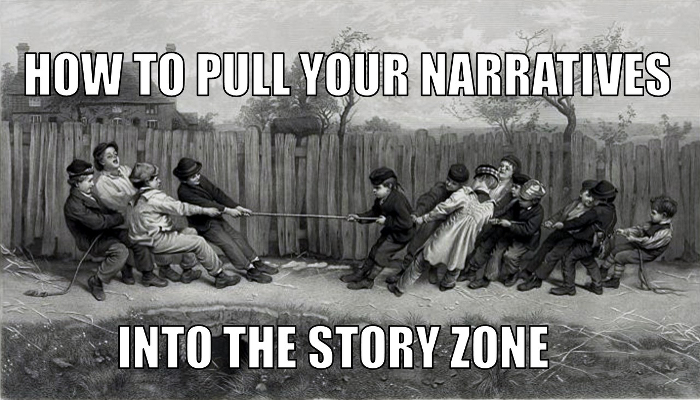
My mom knows nothing about football, but she knows about a former lineman for the LA Rams. She knows that Rosie Greer, a Pro Bowl member of the “Fearsome Foursome” likes needlepoint. The fact that she has committed this knowledge to memory is an example of narrative facts that enter the story zone.
Earlier this year, we learned how storytellers use story statements to open questions inside a listener’s mind. Today, we’re going to discuss a special type of story statement, one that messes with the listener’s prior knowledge.
Take a look at the following narrative statements.
Jack is five years old.
Elizabeth is ninety-five years old.
On the surface, these statements appear to deliver simple facts such as name, age, and gender. But, underneath, they deliver deeper meaning because of the listener’s prior knowledge of 5-year-olds and ninety-five-year-olds. As long as these facts align with the prior knowledge, nothing special happens. But when they misalign, narratives begin to enter the story zone. Consider the following:
Five-year-old Jack needs a heart transplant.
Ninety-five-year-old Elizabeth just finished her first marathon.
Story statements give listeners facts to chew on instead of mindlessly digesting them whole. In these instances, we’ve transformed simple narrative facts into story statements because they conflict with preconceived notions. Five-year-olds are supposed to be healthy and ninety-five-year-olds aren’t supposed to be running marathons. As a result, listeners are forced to rectify the disparity within their own minds, which in turn, makes the facts interesting and memorable.
Therefore, the next time you must deliver fact upon fact, find something that conflicts with the audience’s default understanding of the situation, like:
- a young person with a serious health problem,
- a geriatric marathon runner,
- or a ferocious football player who loves needlepoint.
Give your listener’s something to chew on. Use story statements to pull your narratives into the story zone.
Photo Credit: The Tug of War. 1879. Image. Retrieved from the Library of Congress,